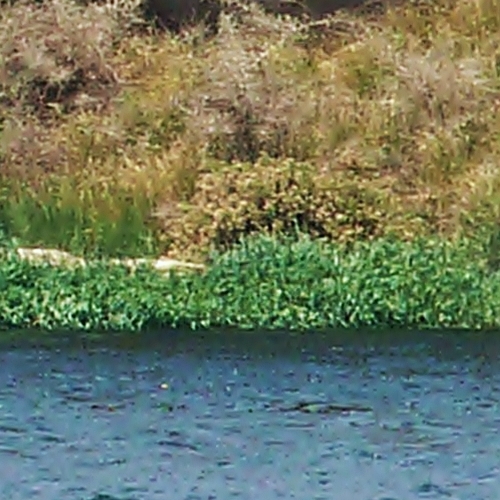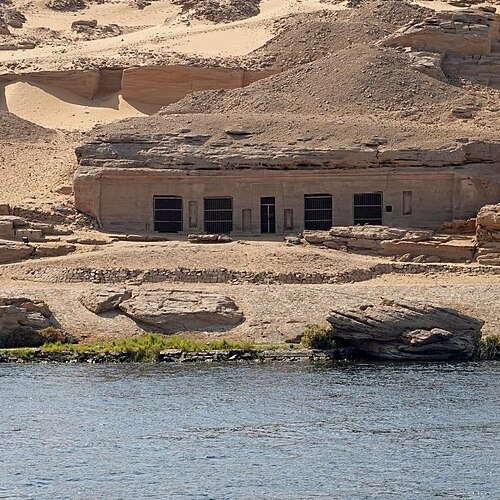No other nation in the world says ‘Welcome’ as often as the Egyptians, and every time, they mean it. While the ancient civilization of Egypt continues to amaze, contemporary Egyptians are equally remarkable.
Gebel El-Silsila
Gebel El-Silsila
Gebel El-Silsila is one of Egypt’s most fascinating, yet often overlooked, archaeological sites, located about 65 kilometers north of Aswan along the Nile. This ancient quarrying site has a rich history that stretches back thousands of years, serving as a vital source of stone for many of Egypt’s grand temples and monuments, including Karnak, Luxor, and even the temples at Kom Ombo. But Gebel El-Silsila is far more than just a quarry; it’s a treasure trove of ancient inscriptions, rock carvings, and shrines that tell the story of the pharaohs, workers, and travelers who passed through here.
The name Gebel El-Silsila translates to “Mountain of the Chain,” and it refers to the narrowest point along the Nile, where the river cuts through sandstone cliffs on either side. This natural bottleneck was not only a strategic location but also an abundant source of high-quality sandstone, making it essential for the construction of Egypt’s monumental buildings during the New Kingdom and later periods. The sheer size and scope of the quarrying operation here is impressive—blocks of sandstone were carefully extracted and transported down the Nile to fuel the building projects of pharaohs like Ramses II and Amenhotep III.
What makes Gebel El-Silsila truly special, however, is the wealth of rock inscriptions and carvings that have survived the passage of time. As you explore the area, you’ll encounter hundreds of inscriptions left by quarry workers, priests, and travelers, each telling its own story. Some of these are simple graffiti—names and dates carved into the rock by workers proud of their contribution to Egypt’s great temples. Others are more elaborate, with detailed scenes of the gods, the royal family, and religious rituals.
One of the most remarkable features of Gebel El-Silsila is the presence of rock-cut shrines and chapels, which were dedicated to various gods and pharaohs. These small sanctuaries are carved directly into the cliffs, and many still bear traces of their original reliefs and inscriptions. The most famous of these is the Speos of Horemheb, a rock-cut chapel dedicated to the gods of the Nile, built during the reign of Horemheb, the last pharaoh of the 18th Dynasty. In this sacred space, the pharaoh is depicted making offerings to the gods, emphasizing the connection between Egypt’s rulers, the gods, and the lifeblood of the Nile.
As you walk through the site, it’s easy to imagine what life must have been like for the workers who toiled here thousands of years ago. Gebel El-Silsila wasn’t just a quarry; it was a bustling community. Workers and their families lived in simple settlements nearby, and religious rituals were performed to ensure the protection and success of the quarrying efforts. You can still see remnants of their daily lives in the form of small shrines, tools, and other artifacts that have been uncovered by archaeologists.
One of the most striking aspects of Gebel El-Silsila is its natural beauty. The sandstone cliffs rise dramatically above the Nile, and the contrast between the golden rock and the lush greenery of the riverbanks is truly breathtaking. Exploring the site by boat is a popular way to take in its grandeur, allowing you to glide along the Nile just as the ancient Egyptians did when they transported massive stone blocks to build their temples.
In recent years, Gebel El-Silsila has gained more attention from archaeologists and visitors alike, thanks to ongoing excavations that continue to reveal new discoveries. These excavations have uncovered ancient tombs, workshops, and more inscriptions, shedding light on the daily lives of the people who lived and worked here. Among the most exciting finds are new tombs dating back to the 18th Dynasty, with beautifully preserved reliefs and hieroglyphic texts that offer valuable insights into Egypt’s quarrying industry and the individuals who oversaw it.
For anyone with a passion for ancient Egypt, Gebel El-Silsila is an extraordinary destination that combines the grandeur of Egypt’s architectural achievements with the intimate stories of the people who made them possible. Whether you’re exploring the rock-cut chapels, marveling at the inscriptions, or simply soaking in the stunning views of the Nile, Gebel El-Silsila offers a unique and immersive journey into the heart of ancient Egypt’s craftsmanship and spirituality
Created On March 18, 2020
Updated On July 22 , 2025



